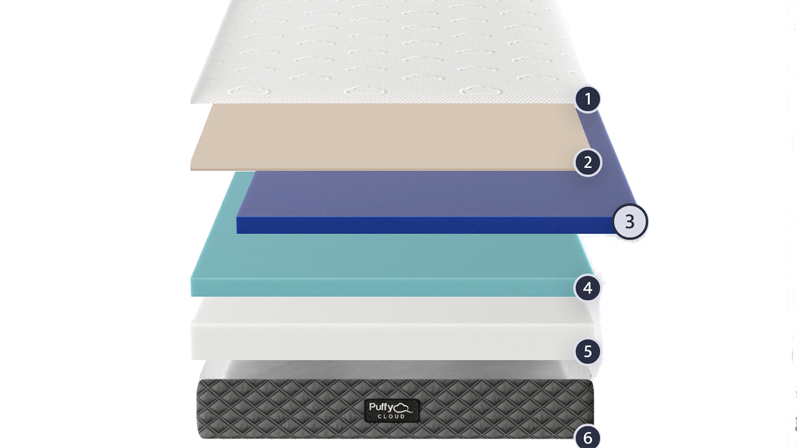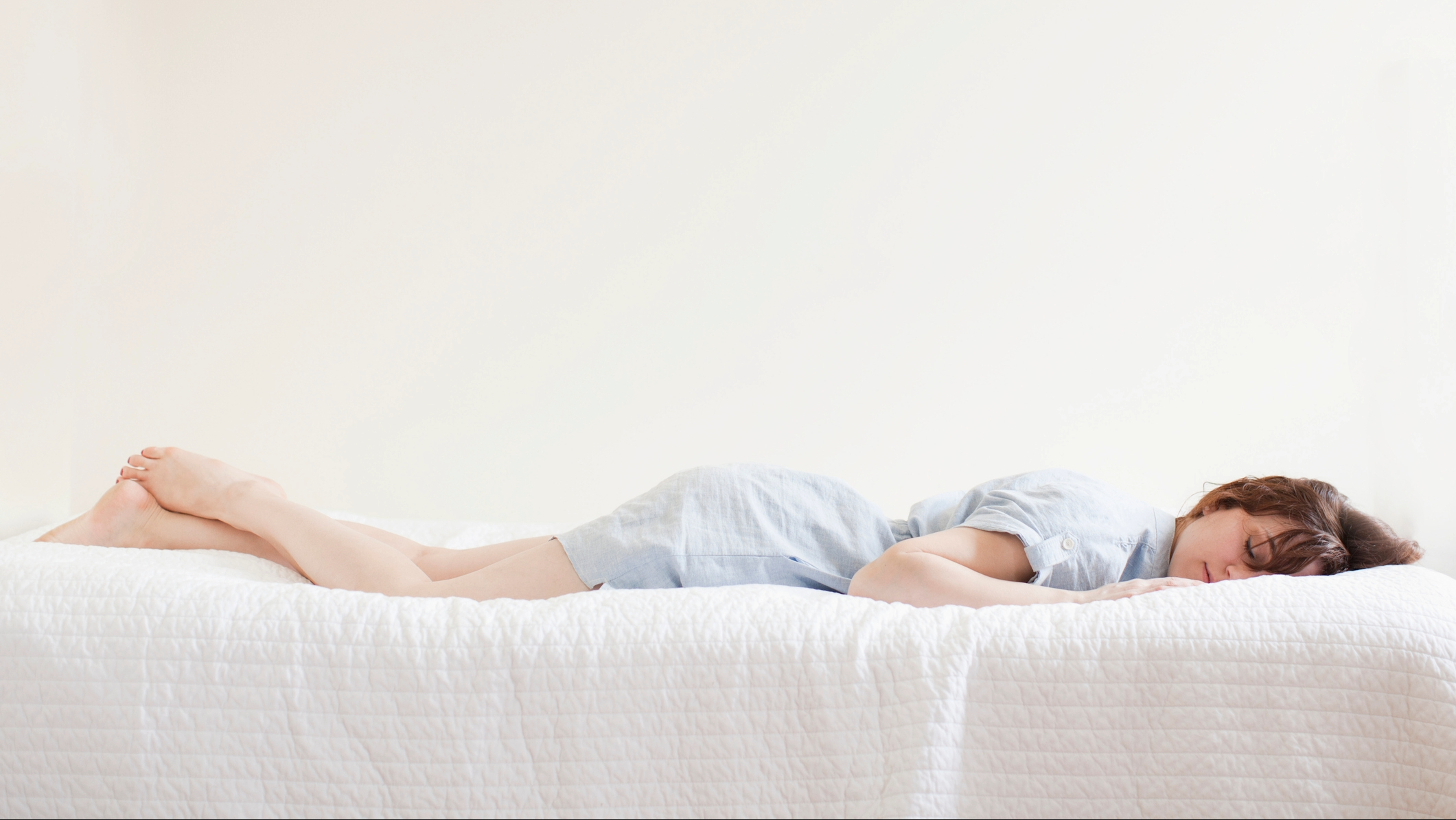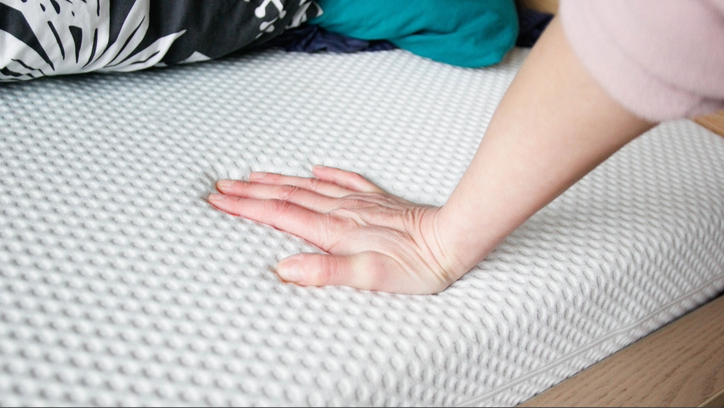What are mattress comfort layers and why are they important?
Comfort layers can isolate motion, align the spine, and regulate temperature

The feeling of getting comfortable in bed after a long day is unmatched. Whether you have a soft or firm mattress or something in between, our bodies should feel cradled and comfortable. The secret to this feeling is the topmost section of a mattress called the comfort layer.
Many of our top picks in this year's best mattress guide for all sleepers feature comfort layers made from luxurious gel-infused foams and individually wrapped microcoils. Depending on the type of bed, the materials used to create these layers can vary and will produce a different feel.
Here, we'll take a look at what comfort layers are, why they're so important and the materials used so you know what to look for when you're purchasing your next mattress and how to choose a comfort layer that's right for you.
What are mattress comfort layers?
There are primarily three main parts inside a mattress. These are the support core, comfort layer and the cover. A support core forms the foundational base of the bed while the comfort layer sits at the top having a strong influence on how your bed feels, rather than the support you'll get. The cover holds everything together in place enveloping the whole mattress.
Alongside providing comfort, these top layers can help control motion isolation, regulate temperature, and help keep the spine aligned. For some of you, a soft and cushioning feel might be a priority, while for others it may be firmness and support.
What you'll get from your comfort layer depends on what materials were used, the thickness and firmness of the material, and the structure.

Why are mattress comfort layers important?
It’s true that comfort layers are responsible for creating a first impression of how soft a mattress is. This is because of the cushioning it provides, acting as a buffer between you and the support core.
The layers are also typically designed to contour to your body and cradle you while you toss and turn during sleep. It evens the weight distribution, preventing a sinking or sagging feeling. Without adequate comfort layering, your pressure points such as the shoulders, hips and back may take the brunt causing discomfort and pain. Even though the support core provides the rigidity, the comfort layer should be firm enough to ensure there is a healthy spinal alignment and pressure relief.

Robust comfort layers can help ensure that there is minimal motion transfer from one end of the bed to the other, by preventing the vibrations from disturbing your sleep. This can make sharing a bed with a restless partner or fidgety children a lot easier.
If you are a hot sleeper, or experience hot flashes, then paying particular attention to the comfort layers of your mattress can help. Many of the best cooling mattresses feature comfort layers made with cooling technology. They usually also feature breathable and light fabrics which have moisture wicking properties, made to keep you cool throughout the night.
Mattress comfort layer materials
Memory foam
Known for its conforming nature, memory foam is used in comfort layers for its body-hugging sensation. It also provides pressure relief, motion isolation and absorbs noise well.
While traditional memory foam sometimes retains heat making it less comfortable hot sleepers, new variants include gel infusions with green tea, graphite or bamboo which help dissipate heat. This also largely depends on the manufacturing method. Open-cell structures leave spaces in the form making it more softer and breathable. Closed-cell memory foam ,on the hand, is firmer and is prone to trap heat.
Memory foam is typically measured in its density range, pounds per cubic foot (PCF), to understand its level of performance in motion isolation, contouring, temperature regulation and overall comfort. A 3.9 PCF or lower is considered to have mild contouring, anything between 4 to 5 is medium and those which are 5.5 or higher are extremely dense.

Latex
This is a popular material used in both support and comfort layers due to its durability. There are two types of latex: natural latex which is derived from rubber tree sap while its synthetic counterpart is made from petroleum.
It rates low on elasticity as compared to memory foam but is often cooler and more breathable. However, latex has greater motion transfer because of the notable bounciness making it unsuitable for light sleepers or those with restless partners.
Latex is measured in a unit called indentation load deflection (ILD) ranging from 16 or lower (extra soft) to 37 or higher (firm). The ones which score anywhere between 17 to 31 are typically used in comfort layers as these are soft, medium soft, medium or medium firm.
Polyfoam
Polyurethane foam derived from petrochemicals is often a common element in budget-friendly mattresses as it's a cheaper material to produce. It's more springy than memory foam, meaning your comfort layer won't feel as luxurious or supportive.
There are two main types used in mattresses: uniform and convoluted. Due to its even surface, uniform foam is used in middle upholstery and quilting while the convoluted one can be often seen in mattress toppers and transitional layers.

Natural fibers
Organic cotton, wool and hemp are becoming increasingly popular comfort layer materials due to their coolness and durability. Other options include silk, horsehair and coconut coir.
They are sought out for their softness, breathability and moisture wicking properties making these a perfect match for humid regions, summer nights and those prone to sleep hot. However, these usually are on the pricier side and may also emit natural odors over time.
Microcoils
These are the smaller versions of the innerspring coils used in hybrid and spring mattresses. Compared to the innerspring coils which are 6 inches or more, these are just 1 to 4 inches tall.
These are being preferred more lately due to better contouring, breathability, bounce and the natural heat dissipating mechanism. Microcoils are also used within foam or fabric comfort layers to reduce motion transfer.
The kind of construction then also determines the support it offers: thicker coils are used where more pressure is applied, shoulders, hips and midsection while thinner coils are added in areas with supporting lesser weight, like the head and legs.
Sign up to get the BEST of Tom's Guide direct to your inbox.
Get instant access to breaking news, the hottest reviews, great deals and helpful tips.

Becky is a Sleep Staff Writer at Tom’s Guide covering all things sleep-related including product reviews, research studies, news and explainers. She works on specialist bedding content and is responsible for buyer’s guides like the best pillows for all sleepers and best mattress protectors focusing on popular brands such as Tempur-Pedic, Avocado, Coop Home Goods and more. Becky is a PPA accredited journalist who is keen to explore the intricacies of sleep, its effects on skincare, mental wellbeing and work performance. While not thinking of sleep, she can be seen reading in cosy bookshops or learning about global food culture.
